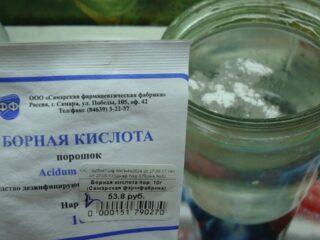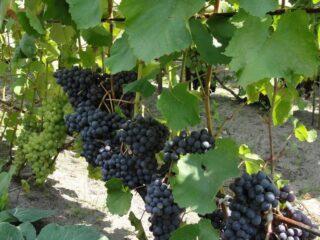Content
For more than 40 years, Reliance Pink Seedlis grapes have been one of the popular hybrid crops in many countries around the world. Excellent taste and almost complete absence of seeds allow the berries to be used for the production of alcoholic and non-alcoholic drinks, as well as for fresh and dried consumption.

Reliance Pink Seedlis grapes are very beautiful and tasty
History of appearance
In the middle of the last century, American breeders were tasked with breeding frost-resistant grapes with excellent taste. Scientists successfully dealt with this, introducing in 1964 a new hybrid called Reline Pink Seedlis, which was obtained by crossing the Ontario and Suffolk Red varieties.
The originator of the hybrid was Arkansas State University in the USA.
As a result of observations of the crop, which were carried out in experimental vineyards in different regions, it was found that the plant can withstand temperatures down to -34 ° C, which is very important for growing Reline Pink Seedlis in cold regions.

Reliance Pink Seedlis variety is not afraid of cold
Description of grape variety Rilines Pink Seedlis
Reliance Pink Seedlis grape is a tall plant with a strong vine that requires staking. The hybrid is intended for growing uncovered.
Bunches
The cylindrical-shaped bunches of Reliance Pink Seedlis grapes are dense and quite large. According to the authors, the weight of one bunch is on average 300 g. According to reviews of Russian gardeners, a fruit cluster weighs about 200 g.

Hybrid clusters are compact, dense
Berries
Small (about 1.5 g), dense berries during ripening acquire a white-pink or intense pink color and a pleasant strawberry aroma.
The pulp is juicy, tender, and contains virtually no seeds. The peel is also soft, but durable, and can be removed with a bag. When eating fresh berries, the skin is chewed well and does not spoil the taste of the grapes.
Vine
Reliance Pink Seedlis grape bushes are powerful, tall, requiring the construction of special supports - trellises, arbors, etc. The growth rate of the vine is determined to be high, therefore, to prevent excessive growth, the bushes have to be pruned annually.
The five-lobed, slightly dissected leaves of the plant have different shades - in the lower part of the bush they are darker, and in the upper part they are lighter.
The small flowers are bisexual, eliminating the need for other varieties for pollination.Moreover, this particular grape is often used as a pollinator plant.

Pink Seedlis vine is fixed on supports
Characteristic
Hybrid Rilines Pink Seedlis has good survival rate and growth rate. Already in the fourth year after planting, you can harvest a full grape harvest.
Ripening period of grapes Reliance Pink Seedlis
Reliance Pink Seedlis is a super early variety, the fruiting period of which begins 110 days from the moment the buds open. In the southern regions of the country, the berries ripen in early August, and in the central regions - in September.
Grape yield Reline Pink Sidlis
The hybrid Relines Pink Seedlis is characterized as high-yielding. Under favorable weather conditions and compliance with the rules of agricultural technology, it is possible to collect 120-150 centners or 8-10 kg from one bush from 1 hectare.

The yield of Reliance Pink Seedlis grapes is pleasantly impressive
Taste
The taste of Reliance Pink Sidlis grapes is labruscian, with subtle notes of strawberry and light bitterness. The high sugar content (24%) and low acidity (6-7 g/l) make it possible to consume these grapes fresh.
The tasting assessment of the taste qualities of fresh grapes was 7.4 points, dried - 7.6 points.
Growing regions
The hybrid is grown in almost all regions of the country, except the coldest. When cultivated in the cool Siberian region, the vine is protected from the cold for the winter to avoid freezing.
Frost resistance
Reliance Pink Seedlis grapes were presented by American breeders as a frost-resistant hybrid that can withstand temperatures down to -34 ° C and is recommended for cultivation in cold regions of the country.
But given the fact that the northern states of America are located south of the capital of the Russian Federation, the cold resistance of the crop for the colder regions of Russia is not too high. Therefore, in Siberia, where frosts often exceed the permissible limit, grapes have to be covered for the winter. When growing in the middle zone there is no need for this.

In warm regions, Reliance Pink Seedlis is not covered for the winter.
Drought resistance
The powerful root system of grapes allows them to extract water from the deep layers of the soil, so this crop is not afraid of drought. Moreover, too high soil moisture often causes root rot and subsequent death of the entire bush. Therefore, it is recommended to water grapes only during the dry season. With periodic precipitation, the plant will have more than enough moisture.
Resistance to diseases and pests
Reliance Pink Seedlis grapes have good resistance to fungal infections and pests common to this crop.
The possibility of infection with mildew and podium remains, so every spring it is recommended to carry out preventive treatment of the vine with fungicidal preparations.
Methods of application
The almost absolute absence of seeds makes Kishmish Reliance Pink Seedlis grapes an ideal raw material for the production of alcoholic and non-alcoholic drinks.
Advantages and disadvantages
Reliance Pink Seedlis grapes have many advantages. It also has two small drawbacks.
Pros:
- good taste;
- high productivity;
- fast growth and good survival rate;
- frost and drought resistance;
- early ripeness;
- versatility of use;
- self-pollinating;
- resistance to diseases and pests.
Minuses:
- short shelf life;
- the tendency of berries to crack during the rainy season.
The predominance of advantages over disadvantages makes this hybrid popular among winegrowers in different regions.
Landing rules
The full development of grape bushes and crop yield largely depend on the quality of planting material. Healthy cuttings and seedlings should be elastic, without swelling, growths and mechanical damage.
To grow grapes, it is advisable to choose flat, sunny and sheltered areas. This crop does not like excess moisture, so the soil should be lightly permeable. Ideally, plant grapes in loose rocky, chernozem, carbonate or low-carbonate soil. But calcareous soil is definitely not suitable for its cultivation.
In the process of planting grapes, pre-prepared planting holes are filled approximately 1/3 with drainage and chernozem (or other fertile soil, which can be acidified with organic matter if necessary). The seedling is placed in the center of the hole so that its root system can freely fit, and covered with the remaining soil.
The distance between bushes should be at least 80 cm, and between rows - 100-120 cm.
You can plant grapes in open soil in the spring, when consistently warm weather sets in and the ground warms up to +10 °C. In the middle zone, in particular in the Moscow region, this is the end of April, the beginning of May, and in Siberia - the second half of May. In the south of the country, grapes can be planted as early as the first half of April. In autumn it is planted in late September or early October.

The planting hole for grapes must be wide enough
Features of care
For normal development and fruiting, Reliance Pink Seedlis grapes need proper care, which includes:
- Watering. Given the good drought resistance of grapes, it is recommended to irrigate them only during the dry season. At the same time, clayey soils and chernozem require rare and abundant watering, while sandy and rocky soils require frequent and non-intensive watering. During drought, the soil in the root zone is moistened even after harvesting. Mulching with sawdust or chopped dry grass without seeds will help retain moisture.
- Feeding. Organic matter is first added to the soil when planting grapes. Subsequently, every spring the plant is fed with nitrogen fertilizers, and during the fruiting period - with special complex fertilizers.
- Loosening the soil and removing weeds. It is recommended to loosen the soil in the root zone after each watering (if there is no mulch); weeds are removed as they appear.
- Preparing for winter. Hybrid Rilines Pinsk Sidlis tolerates a drop in temperature without problems, so in the southern regions and central Russia, for example, in the Moscow region, it is not necessary to cover the bushes. But residents of Siberia should take care of protecting the vines from the cold. The most common is the so-called dry shelter, when plants are insulated with agrofabric, spunbond or ordinary straw, and then covered with plastic film, creating an air bubble in the bush area.
- Trimming. Before sheltering for the winter, the shoots are cut into six eyes. Dry and damaged branches must also be removed.
- Prevention and treatment of diseases.Rilines Pink Seedlis can become an object of infection with fungal diseases such as mildew, oidium, powdery mildew, rust, etc. Treating the vines and leaves with fungicidal preparations will help to cope with the problem. You can get rid of pests using insecticides.

Any grape vine is pruned every spring.
Conclusion
Reliance Pink Seedlis grapes are an unpretentious and frost-resistant hybrid, suitable for cultivation in almost all regions of the country, except the coldest. The pleasant taste of the berries and good yield make it possible to provide your family with vitamins for several months.
Reviews of Reliance Pink Seedlis grapes








